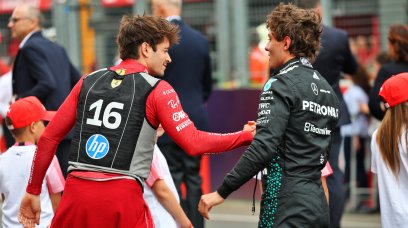Formula 1's power unit freeze came into force in 2022, which meant no supplier was able to make upgrades that added performance. This will be in force through to 2025 and effectively bans Mercedes, Ferrari, Renault and Red Bull Powertrains (Honda) from any upgrades other than those that improve reliability. There was some leeway in 2022 for a specification upgrade up to September 1, namely for the control electronics, energy store (battery) and MGU-K. But from this year there can be no further updates. However, teams can still make modifications that contribute to the overall performance of the car. "The possibility we still have as per the regulation is the packaging," Alpine Executive Director Bruno Famin explained to media. "We can imagine changing the inlet line or changing the exhaust line to other to allow our colleagues from Enstone to make a better aerodynamic [solution]."
Famin: Teams still very limited
In addition to the power unit freeze, the arrival of the cost cap means teams are also restricted in the amount of aerodynamic testing they can do between their wind tunnel work and CFD simulations. "We're going to be very limited in this area again, we're going to have only one software [run] per year now," Famin added. "But it's more on the drivability, the idea is to progress with very small margin now. It's not pure performance, but it's more drivability and integration/aerodynamic gains."
Most read









